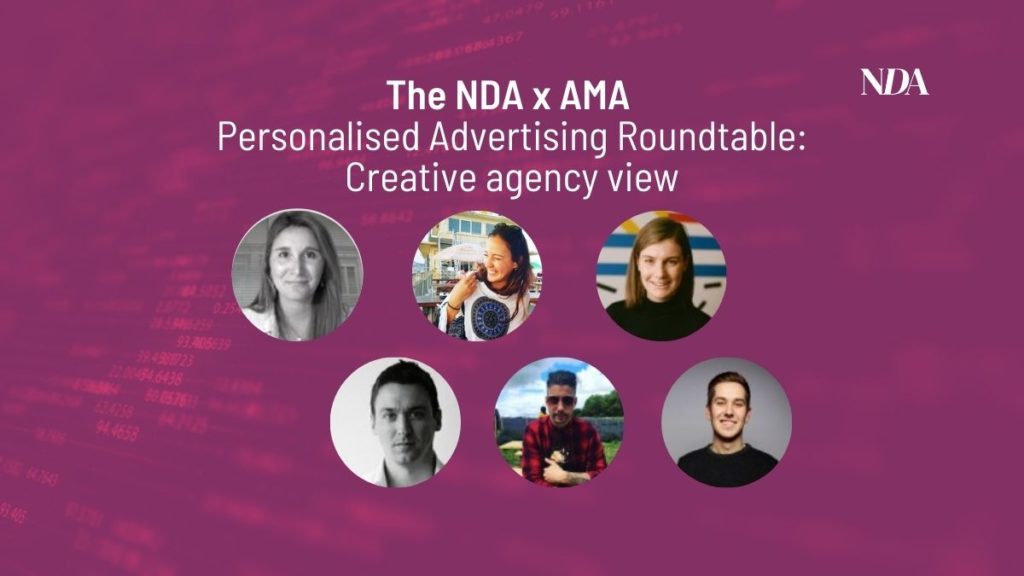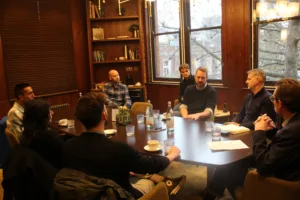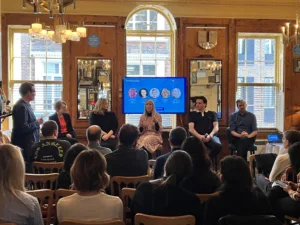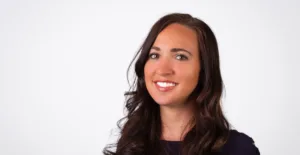This is the second part of the writeup of roundtable held by NDA and A Million Ads to discuss personalisation and dynamic creative. We heard the thoughts of Kim Aspeling, Head of Creative Solutions at A Million Ads; Anna Pollard, Senior Producer at Hogarth Worldwide; James McAllister, Managing Partner, Content at UM London; Atalanta Purce, Account Manager at BBH London; James Kenrick, Account Director at Grey London; and Austin Hamilton, Associate Creative Director at FCB Inferno.
Personalised advertising hasn’t always had the best reputation among consumers but, in spite of that, 61% of them are happy to hand over personal data in order to receive ads that are relevant to them, according to research from A Million Ads.
Hearing figures like that gives brands and agencies the permission to delve deeper into the world of personalisation, and unlock more possibilities.
“I think we’ve only touched 10% of the creative potential of personalisation,” said UM’s McAllister. “There’s been so many big-hit results with quite simple personalisation like changing the age or gender of the model, or changing the copy to reflect different times or geo – quite simple executional things that have ended up with massive results. That’s a lot of the way we play. But there’s an opportunity to start from a big creative idea from the brand and bake in addressability right from the start, on all the different touchpoints, on the big above-the-line wave that the brand communicates.”
Data doubts
The thing that tends to stand in the way of unlocking the true potential of personalisation is getting access to the first-party data that brands have at their disposal. But many brands are very cautious with how they handle data because of GDPR, with even the mention of ‘data’ “ringing alarm bells in a lot of client’s heads”, according to Grey’s Kenrick.
“When working with clients, you need to remind them, along the journey, of the reasons they wanted to run dynamic ads in the first place. And, a lot of the time, even the word ‘data’ can become a sticking point,” explained Kenrick.
“We’ve had campaigns that have started off very ambitious but, somewhere along the way, have switched, because of time or because they have enough on their plates without having to go through their legal department as well. So, you end up with something that’s just name checking the weather and the time of day. But, at the start of the campaign, there’s always that ambition to do something category changing.”
What FCB’s Hamilton has seen is that it’s not always about whether the data is available or not, but often just a case of the parties within the process being overwhelmed and unable to focus on delivering personalisation to a standard they’d like using the data.
“Everyone is so busy just trying to get out the most basic deliverables. We get a brief as creatives and try to up it up as much as we can. But the account people are more like, ‘we love your ambition, but we’re slammed on a million other clients right now, so I don’t know if I have enough time in the day to do this’,” said Hamilton
“The solution is getting people in super early, and explaining the capabilities crystal clear to the clients, so they know exactly what they can do. Get them really hyped up and excited about the potential, because it’s so much more effective to have 1,000 different ways to sell your product than just one.”
Don’t be overwhelming
Of course, whenever it comes to using data to personalise, there are a few things that have to be taken into account, in particular the fact that it can sometimes be seen by consumers as being a little creepy.
“When I’m explaining dynamic to people for the first time, and I talk about how incredibly personalised it is, a lot of people say that it feels a bit creepy. And I suppose on some level it can be if not done right. What we need to be careful of more than anything else is that people don’t feel they’re being targeted in a bad way. Rather, that they’re being spoken to in a personal way, not targeted, because it can veer over into being a bit too intrusive. So, it has to be handled a bit gently,” said Hogarth’s Pollard.
“We’re all cautious about who’s got our information and who knows what about us. And big brother does seem to be watching us all the time. It’s about finding that balance and showing people that they’re getting an ad because it’s of interest to them.”
The answer to this, according to A Million Ads’ Aspeling, is subtlety.
“Every ad doesn’t have to be obviously personalised. Some of the best ads we’ve created are ones that, if you heard it, you wouldn’t know it’s personalised. It talks to your subconscious, as opposed to telling you that you are this, this, and this, and that it’s raining outside. Maybe it does just serve an ad for ice cream because the weather is nice, but doesn’t actually say the weather is nice, and just talks about the ice cream,” Aspeling explained.
“If it’s done in the right way, you can avoid the creepiness factor and also gain the usefulness of the ad. And then, as an audience, we’re doing what the ad is telling us to do without feeling negative about it, whilst creating better ad experiences for the end consumer.”
Brands should also make sure that they don’t become over-reliant on data, or they risk losing their own identities during advertising, according to BBH’s Purce.
“Clients are collecting more data day-by-day. It’s the access to that which is limiting the potential for creativity and how much we can use,” she said. “It’s a journey. And, as we evolve and collect more data, ultimately it will better the creative. But it’s a double-edged sword; we can’t let the data take control of the creative. Every brand has a certain tone of voice and we can’t let that get wrapped up and lost with trying to pack in as much data as possible, it has to be the right fit and balance.”









